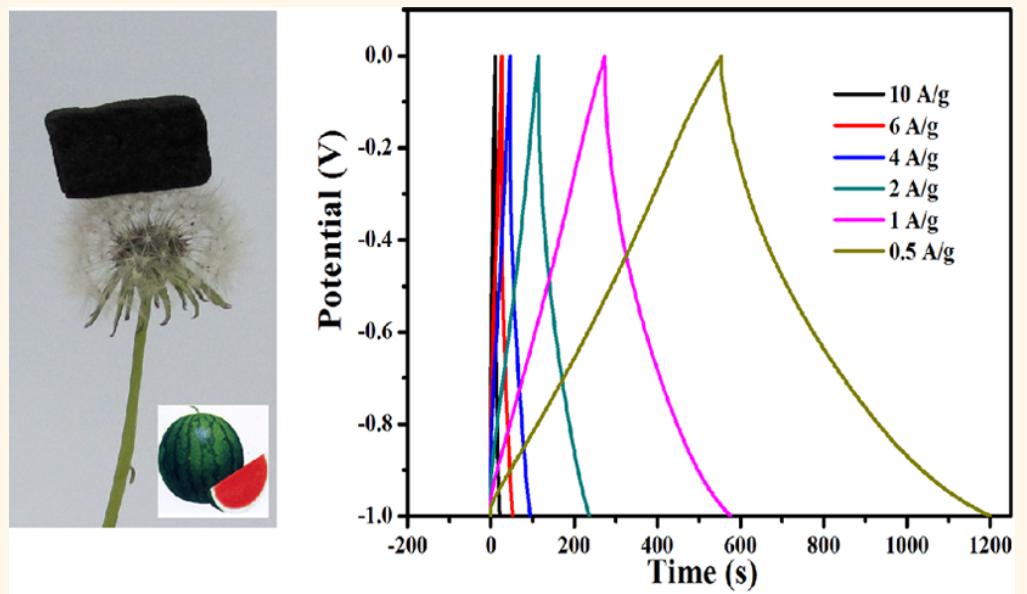
Left Fig.: Watermelon-made carbon aerogel on dandelion
Right Fig.: MCA capacitance of 333.1 F·g–1 at a current density of 1 A·g–1
New types of sponge-like carbonaceous hydrogels and aerogels are developed via hydrothermal synthesis of crude biomass, watermelon as the carbon source by Prof Xiangke Wang Team in Plasma Application Division, ASIPP, collaborating with Prof Anwu Xu from University of Science and Technology of China (USTC).
Made of both carbonaceous nanofibers and nanospheres, these three-dimensional porous flexible carbonaceous gels (CGs) are highly chemically active with strong absorption, and show excellent mechanical flexibility, which enable them to be a good scaffold for the synthesis of 3D composite materials.
Scientists in ASIPP synthesize the carbonaceous gel-based composite materials by incorporating Fe3O4 nanoparticles into the networks of these sponge-like carbonaceous gels. By calcinations, this Fe3O4/CGs composites thereby transform into magnetite carbon aerogels (MCAs).
The MCAs keep the porous structure of the original CGs, which allows the sustained and stable transport of both electrolyte ions and electrons to the electrode surface, leading to excellent electrochemical performance. The MCAs exhibit an excellent capacitance of 333.1 F·g–1 at a current density of 1 A·g–1 within a potential window of ?1.0 to 0 V in 6 M KOH solution. Meanwhile, the MCAs also show outstanding cycling stability with 96% of the capacitance retention after 1000 cycles of charge/discharge.
These findings open up the use of low-cost elastic carbon gels for the synthesis of other 3D composite materials and show the possibility for the application in energy storage.
The related works are published inACS NANO, 2013,7,3589-3597.Chemical & Engineering News commends ASIPP’s newly-developed carbon aerogel as “a promising material for storing energy”. (Chen Changlun Reports).
Backgrounds:
The whole project of preparation and functionalization of nano-materials is supported by the National Basic Research Program (also called 973 Program) of Ministry of Science and Technology (MOST) and Natural Science Foundation of China (Chen Changlun Reports).
Published monthly, ACS Nano is an international forum for the communication of comprehensive articles on nanoscience and nanotechnology research at the interfaces of chemistry, biology, materials science, physics, and engineering. Moreover, the journal helps facilitate communication among scientists from these research communities in developing new research opportunities, advancing the field through new discoveries, and reaching out to scientists at all levels.
Article links:http://pubs.acs.org/doi/abs/10.1021/nn400566d
Comment links: http://cen.acs.org/articles/91/i16/Hydrogels-Aerogels-Melons.html